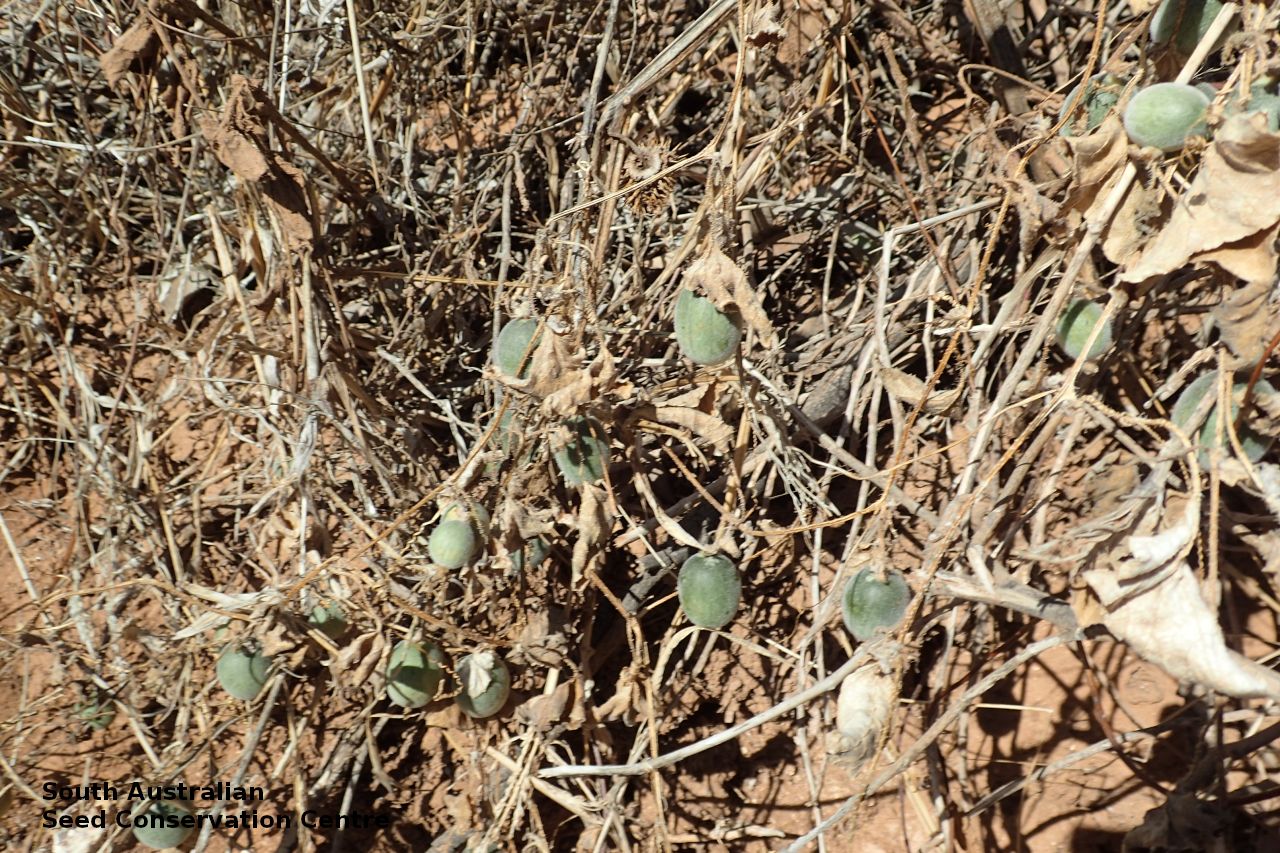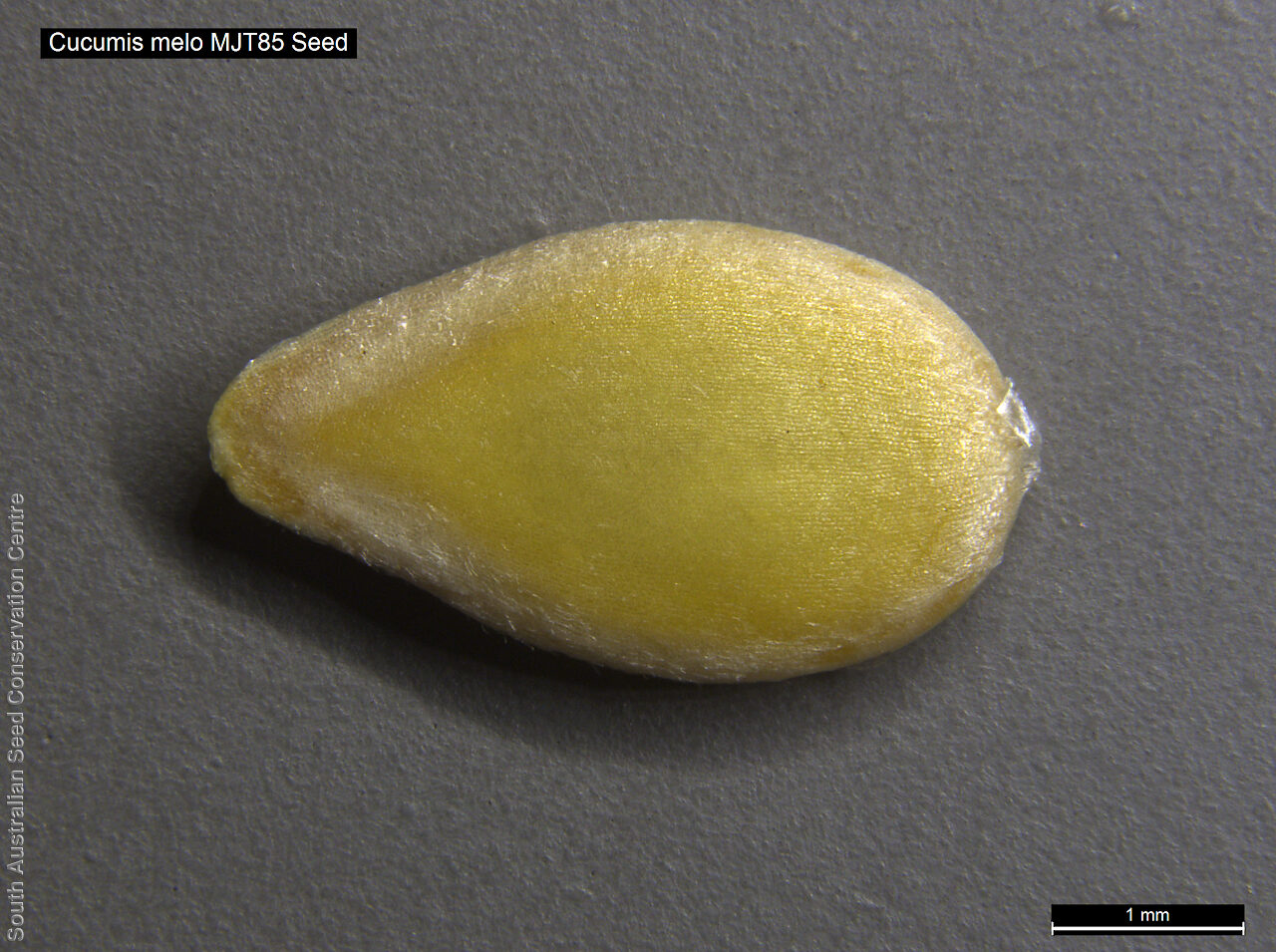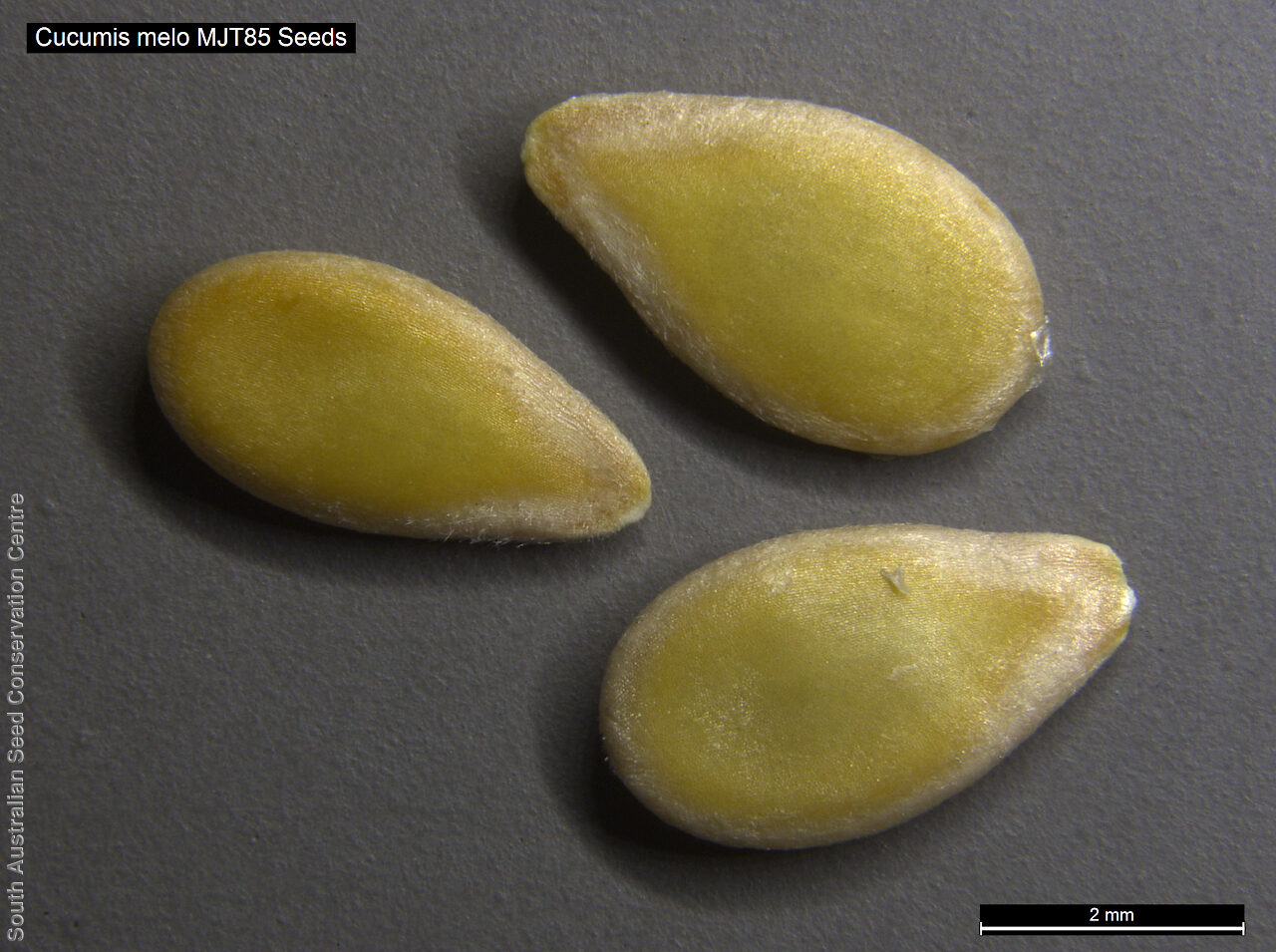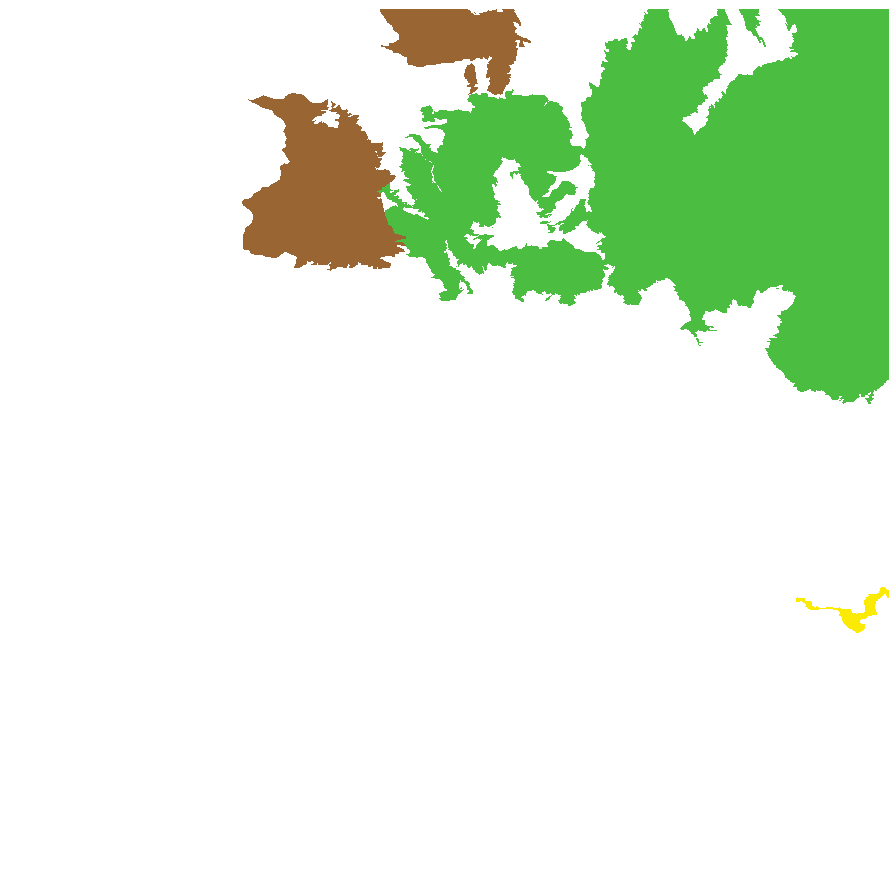





Botanical art
Prior names
Cucumis pubescens, nom.nud.
Cucumis trigonus
Cucumis pubescens
Cucumis pubescens
Cucumis melo ssp. agrestis
Cucumis melo var. agrestis
Cucumis jucundus
Cucumis chate
Common names
Ulcardo melon
Rock Melon
Etymology
Cucumis from Latin meaning cucumber and the word was derived from the Greek 'kykyon' meaning cucumber. Melo from the Greek 'melo' meaning apple-shaped melon.
Distribution and status
Found in the north-east corner of South Australia, growing in grassland or woodland, mostly on clay soils. Also found in Western Australia, Northern Territory, Queensland and New South Wales. Native. Common in South Australia. Common in the other states.
Herbarium regions: North Western, Lake Eyre, Murray
NRM regions: Alinytjara Wilurara, South Australian Arid Lands, South Australian Murray-Darling Basin
AVH map: SA distribution map (external link)
Plant description
Trailing or climbing annual herb with stems to 6 m long. Leaves ovate in outline to 9 cm long and 8 cm, mostly shallowly to deeply 3�5-lobed, lobes ovate, sinuate-dentate to lobulate, acute or obtuse. Male flowers in 2�4-flowered fascicles, female flowers solitary, yellow, densely pubescent. Flowers in summer. Fruits are green to yellow, fleshy, ellipsoid fruit to 5 cm long and 2 cm diameter, glabrescent or hirsute, on pedicels 2 cm long. Seeds are yellow, flat pear-shaped seed to 5 mm long and 3 mm wide.
Seed collection and propagation
Collect seeds between September and March. Collect maturing fruits, those that are large and turning green-yellow and with hard seeds inside. Place the fruit in a bucket of water and rub the flesh off with your hands. Drain the water and wash again if required to remove all the flesh. Then spread the wet seeds on some paper towel and leave to dry. Store the seeds with a desiccant such as dried silica beads or dry rice, in an air tight container in a cool and dry place. From one collection, the seed viability was high, rat 100%. Seeds are non-dormant, viable seed should germinate readily.
| Location | No. of seeds (weight grams) | Number of plants | Date collected | Collection number Collection location | Date stored | % Viability | Storage temperature |
|---|---|---|---|---|---|---|---|
| BGA | 2,600 (9.76 g) | 8 | 26-Sep-2007 | MJT85 Lake Eyre | 19-Sep-2008 | 100% | -18°C |
Number of plants: This is the number of plants from which the seeds were collected.
Collection location: The Herbarium of South Australia's region name.
% Viability: Percentage of filled healthy seeds determined by a cut test or x-ray.